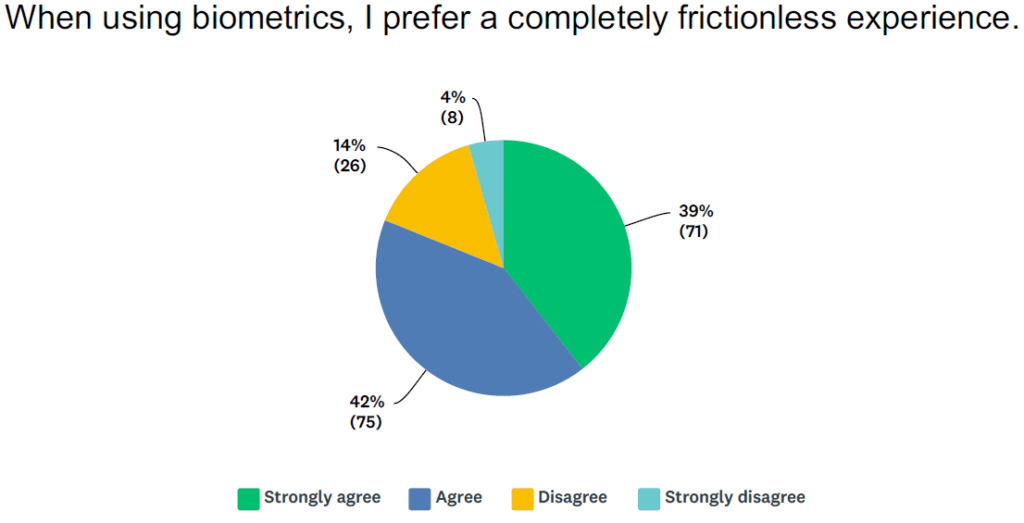
One of the clearest trends at last autumn’s Money20/20 event in Las Vegas was the emergence of a popular new buzzword: “Frictionless”. As one of the event’s participants quipped, friction is the new F-word, and while that may be especially true in the financial services sector, it’s a sentiment that is spreading rapidly across a range of fields as digitization makes the operation of any given user interface an increasingly important concern.
Accordingly, the answers to Question 17 of the most recent FindBiometrics Year in Review make a lot of sense. It polled respondents on how much they agreed with the statement, “When using biometrics, I prefer a completely frictionless experience.” Eighty-two percent agreed, with 39 percent indicating that they “Strongly agree” and only four percent saying they “Strongly disagree”.

The majority attitude makes perfect sense when it comes to something like biometric phone unlocking. This is a trend that Apple pioneered with the introduction of its Touch ID fingerprint scanning on the iPhone back in 2013; and the ensuing mobile biometrics revolution has brought the industry to a kind of arms race to make unlocking your smartphone as easy as possible while maintaining security. Apple is still probably the industry leader here, thanks to its introduction of the Face ID infrared, 3D facial recognition system in its latest iPhone models; but others are following suit, with everyone seeking to attract consumers with the prospect of frictionless phone unlocking.
With that in mind, some might wonder why anyone would say they don’t want a completely frictionless experience. But there are some good reasons. For some, “completely frictionless” is a slippery slope toward “easy to spoof”: If a given biometric security system is very easy to use, the reasoning goes, then a fraudster will have an easier time tricking it. Going back to the smartphone example, one mobile brand suffered an embarrassing report last year that its Face Unlock system could be fooled with a simple black and white photo of the registered user, potentially opening the door to all sorts of shenanigans – especially if this kind of biometric authentication were to be used for online banking, for example.
This is part of the reason that liveness detection and multimodality have emerged as such important issues over the past year, with each approach helping to shore up the security of a given authentication system. And if these technologies can help to deliver a future in which biometric security can be virtually assured, it’s a fair bet that at that point everyone will be ready for a completely frictionless experience.






Follow Us